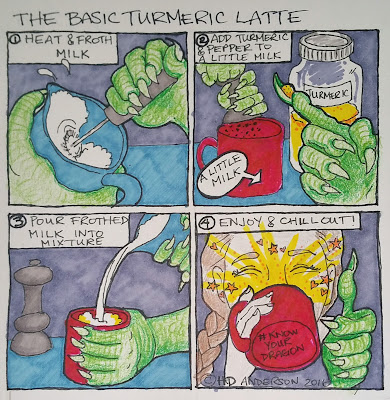You know that term “fight fire with fire”?
Well, like a Mother of Dragons, (Game of Thrones reference) you can actually use the fiery heat of chili peppers to get your inner dragon to behave!
What I mean to say is that if your inner dragon happens to be chronic pain or a tendency towards depression, you ought to consider adding chili peppers to your diet daily. You see, some of the brain chemicals (which act as messengers) and nerve pathways are common between depression and chronic pain. Chili peppers work their magic by causing a reaction which actually blocks pain signals to the brain!
Bring on the endorphins!
It’s our body’s natural response to pain. Our body perceives pain, and endorphins are released to block the signals through our nerves.
Aside from my chili pepper adventures, my own best experience with endorphins occurred after being in labour for more than a day. Unforeseen circumstances led to an epidural, which took the labour pains away and left me in a flooded, pure endorphin state. The best phrase I have to sum up that feeling I had on the operating table that day is “strawberry fields forever.” I felt so incredibly peaceful and blissed out in spite of everything that was going on around me.
While I’ve never been able to get that insane level of endorphins in my body since then, I’ve been able to come close with the aid of hot peppers in a spicy meal. The capsicum in the peppers sends a chemical signal (perception) that you are being burned, and the nervous system reacts with endorphins to block the sensation of pain.
 In a world where we are so stressed, and our nervous systems are taxed to the point of chronic inflammation, does it not make sense to do whatever we can to provoke an upward spiral of functioning? (Tweetable!)
In a world where we are so stressed, and our nervous systems are taxed to the point of chronic inflammation, does it not make sense to do whatever we can to provoke an upward spiral of functioning? (Tweetable!)
To get the blissed out neurological relief that comes from eating chilies (or any hot peppers) a person needs to have some built up tolerance to the capsicum heat. If you’re one of those people who gets diarrhea from eating chilies, it’s possible that either you haven’t built up enough of a tolerance to it yet, or that there’s something else going on like IBS (in which case you might want to get checked out by your doctor.)
While chilies don’t cause any permanent damage, (and actually have a variety of other health benefits) they do their job through irritation, which means that the more delicate among us can choose to either avoid them entirely… or attempt to slowly build up a tolerance, and eventually enjoy this amazing natural side effect.
Remember how the Mother of Dragons actually burned herself in the fire and survived? Yes, this could be you; surviving, and birthing new power over your dragons. (No pain, no gain, right?)
For those who are well acquainted with the wonders of chili, they know how after the burn, the flood of endorphins after a meal brings relief from any physical or emotional pains.
They also know that capsicum itself does not get digested and will burn just as much on the way out as it did going into your mouth! (For the love of all things holy, you have been warned!)




